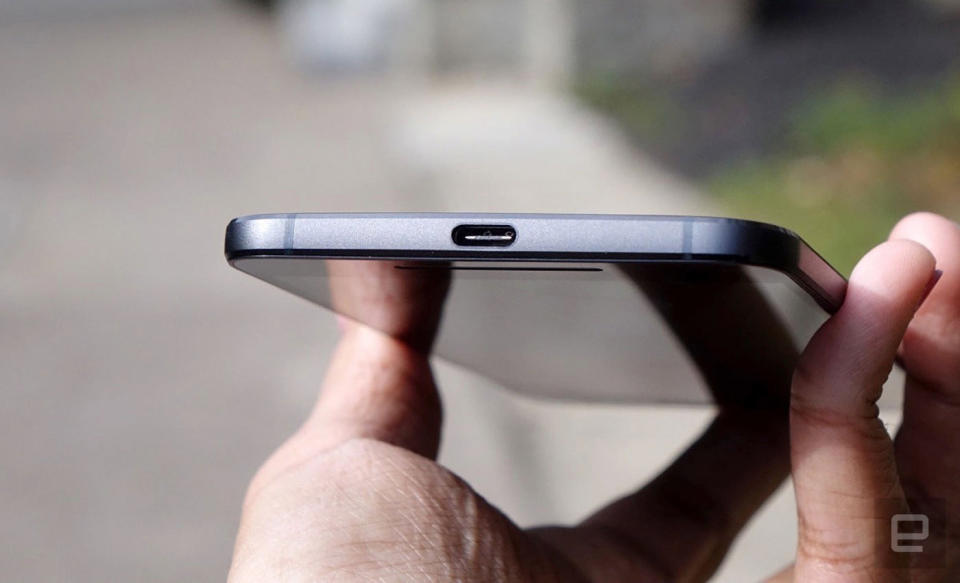Intel says new USB Type-C spec will ease headphone jack loss
The standard gets new audio and video display functions.

Judging by comments on articles about Apple's next iPhone and the Moto Z smartphone, the public is not crazy about ditching the headphone jack. However, Intel and its partners have embraced the idea, and at the Intel Developer Forum (IDF), company architects Rahman Ismail and Brad Saunders explained why. It's all about changes to the standard that will "really make the USB Type-C the right connector for audio," said Sanders.
USB Type-C is used on Samsung's Galaxy Note 7, the OnePlus 3 and the Huawei-built Google Nexus 6P, along with the Chromebook Pixel and MacBook laptops. The Moto Z also uses it, and so far it's the only device from a large brand to nix the 3.5mm audio port in favor of the newfangled connector.
The idea is to get consumers to use dedicated USB Type-C or wireless headphones, or plug in an (easily lost) adapter for their traditional 3.5mm wired models. Consumers are naturally worried that such an adapter won't come in the box, meaning they won't be able to use their favorite wired phones without spending even more on a dongle.

However, Saunders thinks users will come around thanks to the advantages of the updated standard for USB C. It eliminates the analog to digital circuitry needed in phones, letting manufacturers make them slimmer, he said. It would also allow for more pristine sound, noise cancelling, and effects like extra bass or "concert hall" reverb.
The revised spec also supports "granular" power management, letting the system shut off a microphone if you're just using your headphones for music, for instance. That should ensure that USB audio doesn't suck much more power than a headphone jack.

Intel also revealed a new type of video standard that will be incorporated into USB Type-C. While not a replacement for HDMI, Ismail said "it's good enough to do productivity work or watch movies, but not for a gaming system." It'll even work if you're using a hub to plug multiple devices into a single USB Type-C port.
The updated USB Type-C standard also includes device authentication, making for better security. It will be unveiled later this year, according to Intel. Like all such standards, however, there will be multiple specifications, so your phone's USB Type-C port might not have the same capability at all as the one on your laptop.
